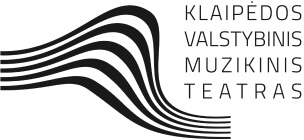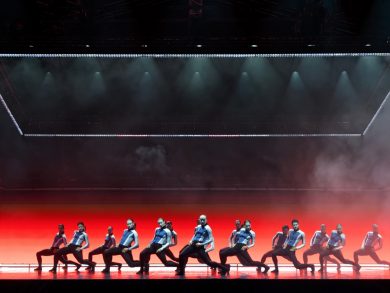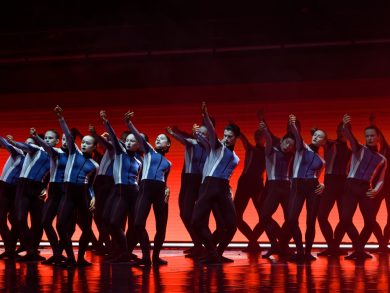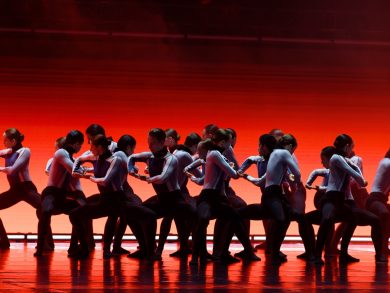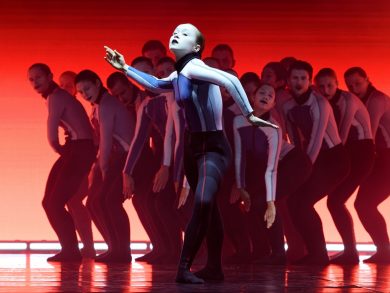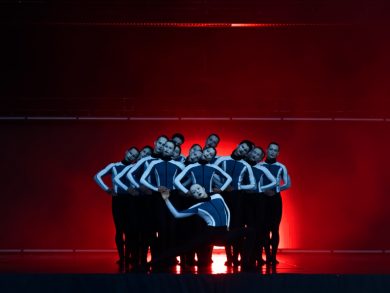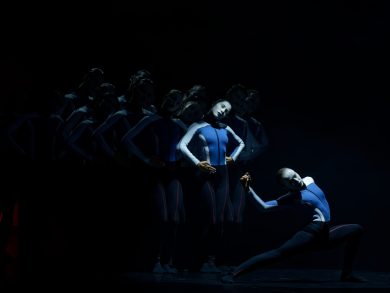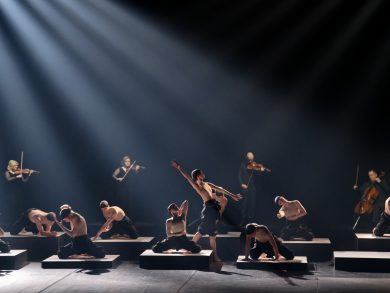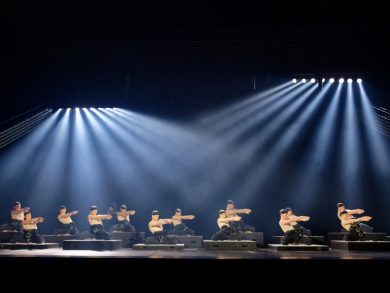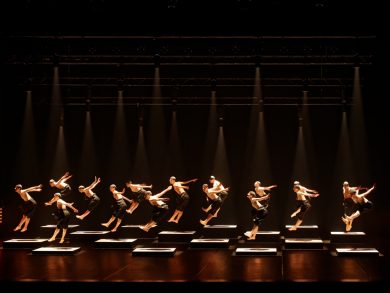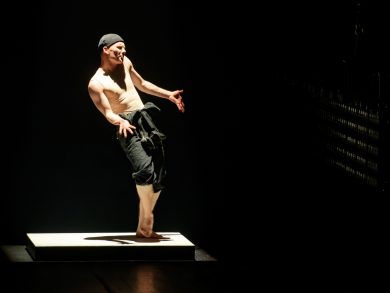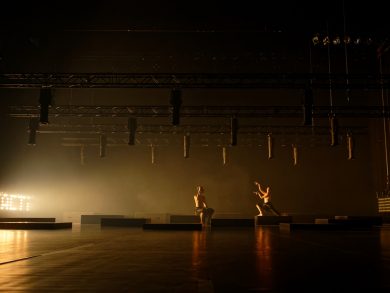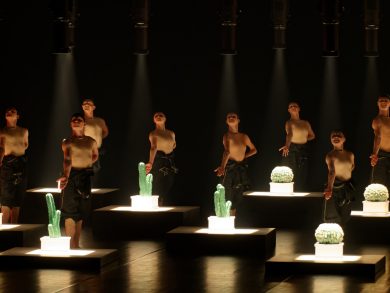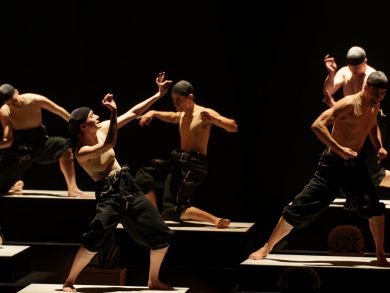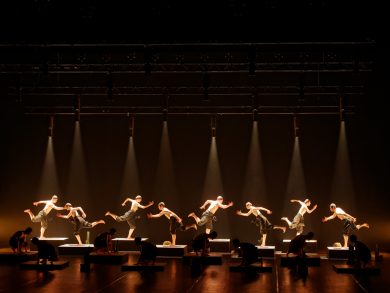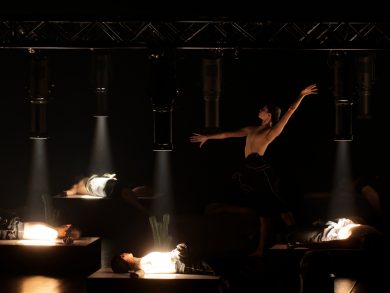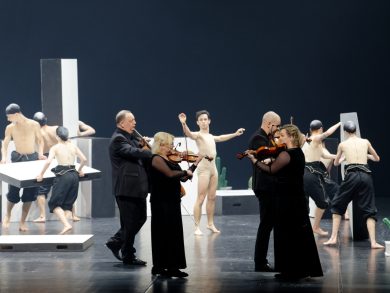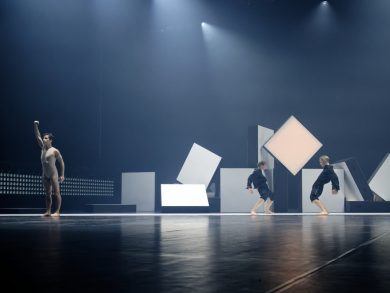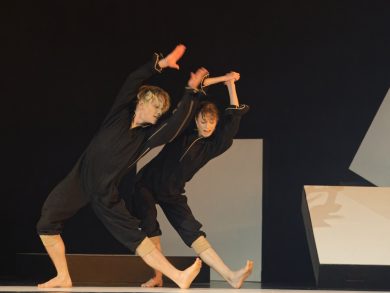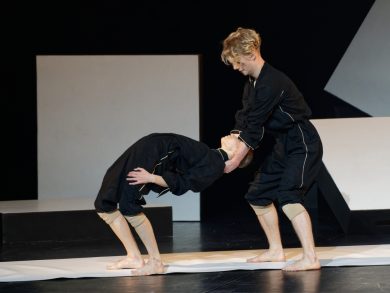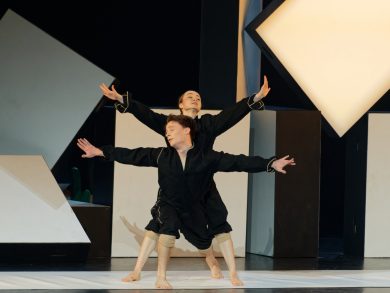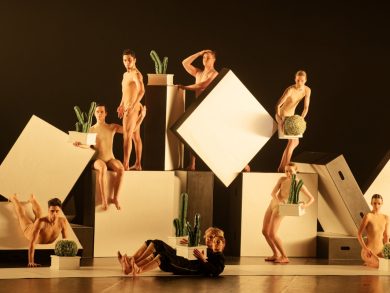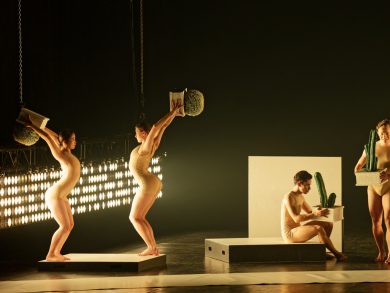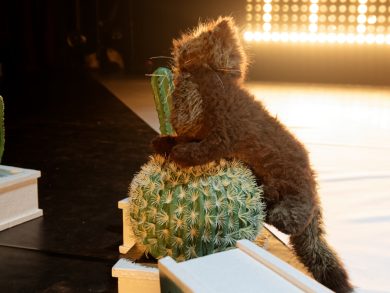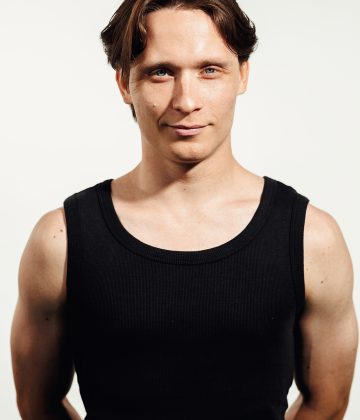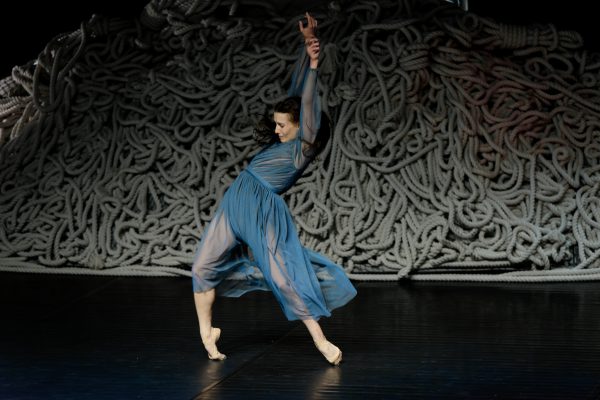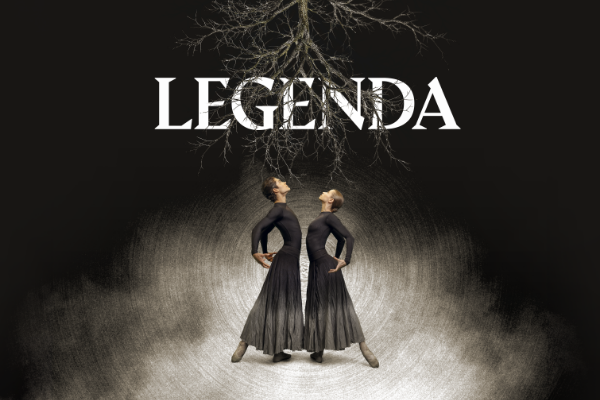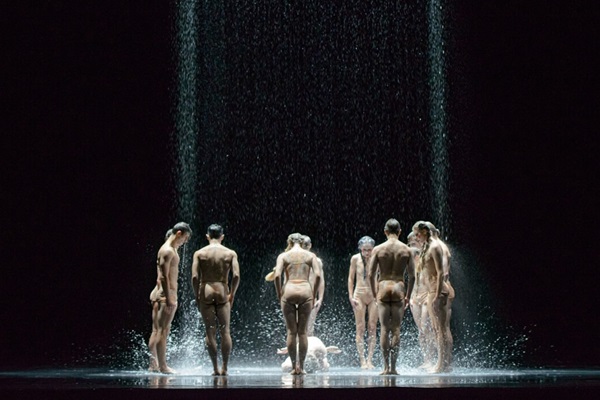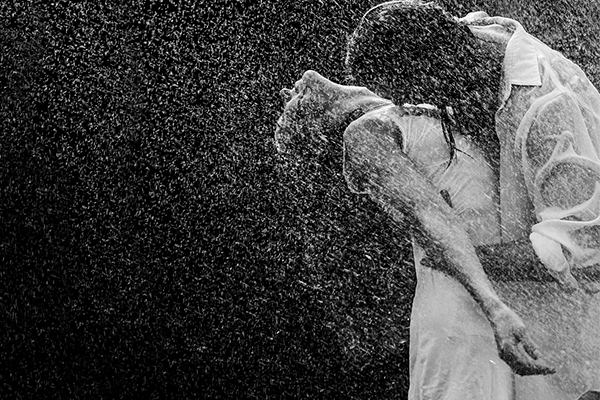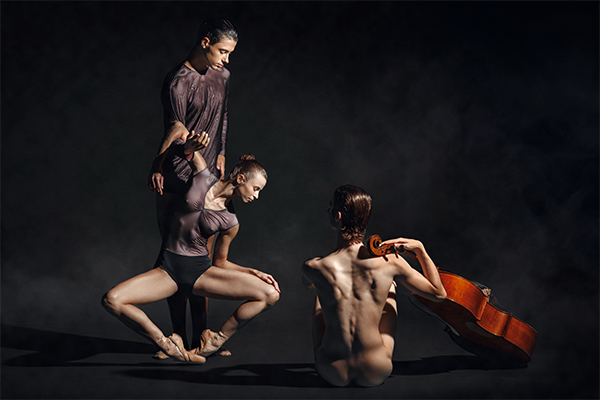CACTI+
A double bill of one-act ballets
Part I
AUDIO UNIT
Choreographer, Composer and Costume Designer Gaj Žmavc
Makeup Artist Aira Braždienė
Lighting Designer Edvardas Osinskis
Video Artist Simonas Margis
World premiere: 2 August 2024 at the Lindenau Shipyard in Klaipėda
In the first one-acter, Audio Unit, Slovenian choreographer and current Artistic Director of the Klaipėda State Music Theatre Ballet Company, Gaj Žmavc, demonstrates the entire corps of ballet dancers as a single organism. Žmavc began collaborating with the Klaipėda State Music Theatre in 2021, having ended his career as a dancer at the Slovenian National Theatre in Maribor a decade ago and launched his new career as a freelance choreographer, sound, and video artist. The mutual admiration that developed with the Klaipėda ballet company while working as Edward Clug’s assistant brought him back to Klaipėda on several occasions to realise his creative ideas, until he finally decided to formalise his relationship by becoming the company’s artistic director from the start of the 2023–2024 season.
“The title of my choreography, Audio Unit, combines two elements that seemed important to me: sound or music, which I’ve created myself, and unity – the totality and unity of our company members. This is my first production for the Klaipėda Ballet Company since I became its artistic director, so I wanted it to showcase the company’s dancers,” explained the choreographer. Dressing the dancers in unisex costumes of his own design, inspired by reminiscences of 20th-century high fashion, the choreographer creates an elegant and attractive visual aesthetic for the performance. He has also composed the minimalist soundtrack for harpsichord, strings and percussion.
Part II
CACTI
Choreographer, Set and Costume Designer Alexander Ekman
Assistant Choreographer Ana-Maria Lucaciu
Music:
improvisation for string quartet (performed live);
Franz Schubert – IV. Presto from the String Quartet No. 14 in D minor, D 810 (Death and the Maiden), arr. for orchestra by Andy Stein (performed from the recording);
Joseph Haydn – IV. Allegro from the String Quartet No. 16 in A major, Op. 9 No. 6, Hob. III:4; IV Allegro; Sonate V (“Sitio”) in A major from Die sieben letzten Worte unseres Erlösers am Kreuze version for string quartet, Hob. XX/1:B (performed live);
Ludwig van Beethoven – excerpt from the String Quartet No. 9 in C minor, Op. 59 No. 3: II Andante con moto quasi allegretto (performed live)
Lighting Designer Tom Visser
Text written and recited by Spenser Theberge (from the recording)
World premiere: 25 February 2010 at the Lucent Danstheater, the Hague (The Netherlands)
Lithuanian premiere: 17 March 2023 at the Klaipėda Culture Centre Fishermen’s Palace
In the second half of the evening, the audience can admire Alexander Ekman’s Cacti, which for the first time sprouted not only in Klaipėda or Lithuania, but also in the Baltic States. Ekman’s idea was to decorate the stage with titular cacti in a performance created for the Nederlands Dans Theater 2 in 2010. Then, the still emerging choreographer, with affection and biting humour, beckoned the audience to think about contemporary dance’s pomposities and pretensions, the role of critics and their often snobbish rhetoric. Since then, Cacti has become a globally recognisable marker of the young choreographer’s work, which has been used to mark the premieres of various companies on the dance map more than twenty times, from Seattle in the Pacific Northwest to Wellington in New Zealand, before they were introduced in Klaipėda.
In the performance, sixteen dancers dance on podiums, as if trapped in white squares. Their rushing, rhythmic movement (Ekman said he was inspired by the sight of Tibetan monks engaging in what looked like a noisy yoga ritual) is accompanied by the music of a string quartet, performed live on stage, and by the ironic commentary that comes from the recording. The dancers furiously try to break out of their invisible prison and eventually they each acquire a cactus carried hither and thither as if profoundly significant object. But what does it all mean?
If it were a play of the theatre of the absurd or an exhibition of Dada readymades, we could say that cacti are sometimes just cacti, or that they are conceptual art objects. The choreographer gave his explanation: “This work is about how we observe art and how we often feel the need to analyse and ‘understand’ art. I believe that there is no right way and that everyone can interpret art and experience it the way they want. Cacti discusses art criticism and it was created during a period of my life where I was very upset every time someone would write about my work. I did not find it fair that one person was going to sit there and sort of decide for everyone what the work was about. Now I have stopped reading my reviews, but still question this unfair system mankind has created.” It is also obvious that the choreographer, who created the set and costumes for his performance, uses the spiky succulents and revealing costumes as a metaphor for man’s existential nakedness, his vulnerability, and at the same time his resilience to the adverse environmental conditions. That this existentialism can be as serious as it is funny is signalled not only by the cacti, but also by the cat’s dummy that falls from the sky at the most unexpected moment…


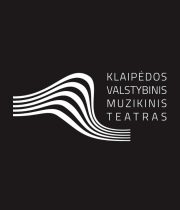

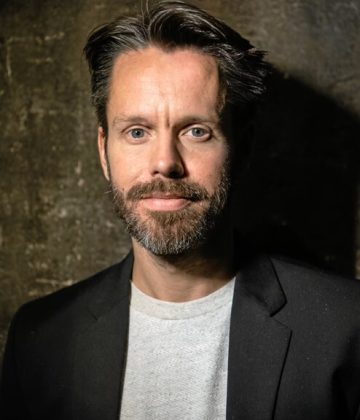
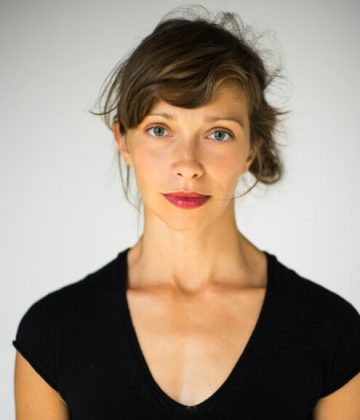

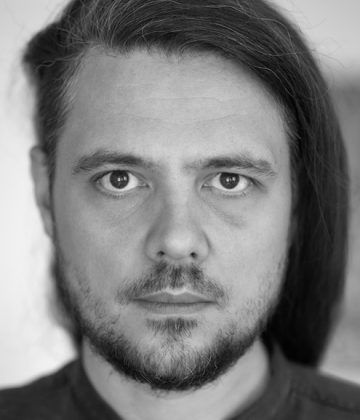
AUDIO UNIT
My new creation is a piece focused on a larger group of 25 dancers. It is a study of dance structure, which is constantly dissolving and re-establishing itself in different forms through fluid but fast-paced transitions and minimalistic but complex and physically demanding dance language.
The work is delicately drawing on popular corps de ballet images in classical ballet, with exposed lines and robotic precision, which at times dehumanises the individual and draws attention to the beauty of the group as a powerful single organism.
The androgynous costume design, inspired by the high fashion retro styles, wraps up the slick and attractive visual aesthetic of this performance. Choreographer has also contributed the original soundtrack, written for harpsichord, strings, and percussion.
Gaj Žmavc
CACTI
This work is about how we observe art and how we often feel the need to analyze and ‘understand’ art. Many of my friends have told me that they didn’t really understand modern art and started to feel that perhaps it was not for them. I believe that there is no right way and that everyone can interpret art and experience it the way they want. Perhaps it’s just a feeling that you canʼt explain or perhaps it’s very obvious what the message is.
Cacti discusses art criticism and it was created during a period of my life where I was very upset every time someone would write about my work. I did not find it fair that one person was going to sit there and sort of decide for everyone what the work was about. Now I have stopped reading my reviews, but still question this unfair system mankind has created.
While creating Cacti, I had the chance to create a work with musicians in the studio, which was a new way of working for me. Together with a string quartet we created a rhythmical game between dancers and musicians which became the score for the work. Cacti demands a high concentration both from dancers and musicians, which makes it very exciting to observe. I have always been fascinated by human capability during highest concentration and our way of acting in a state of emergency.
Cacti is definitely one of those works which I will always feel a certain love for. It is extremely hard to create a piece which feels complete and finished from beginning to end. I think with Cacti we somehow managed to arrange the pieces of the puzzle in a way that it actually felt sort of ‘finished’.
Alexander Ekman
